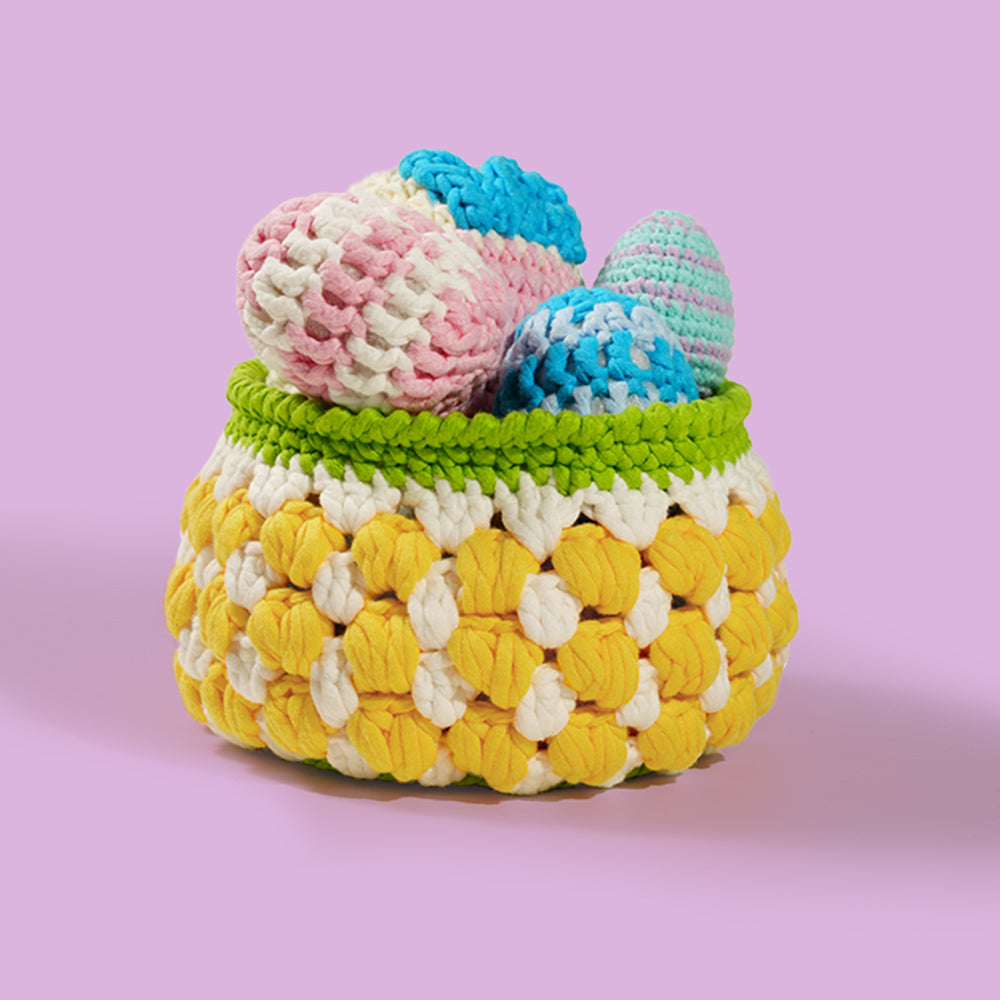How to Make Crochet Projects Easy: Simplicity Meets Creativity
Introduction
Crochet is celebrated for its accessibility—requiring just a hook and yarn—and its therapeutic benefits, yet many beginners feel overwhelmed by complex patterns and tools . By embracing simplicity, you can reduce frustration, boost confidence, and experience faster project completion, turning crochet into a relaxing, productive hobby . This article explores why pursuing simplicity is vital, how to make your crochet projects easy, which beginner kits to choose, and offers an extended Q&A to address your most pressing questions.

Why Pursue Simplicity in Crochet
Crochet’s fundamental appeal lies in its minimalism: one stitch at a time and only one active loop, making mistakes easy to fix and learning curves gentle. Overly intricate patterns can lead to uneven tension, frequent errors, and project abandonment, whereas simple designs foster quick wins and steady progress. Emphasizing simple stitches and clear instructions allows you to develop muscle memory and focus on creative expression rather than technical hurdles.
How to Make Crochet Projects Easy
1. Choose the Right Yarn and Hook
Select a medium-weight (worsted or DK) smooth yarn for clear stitch visibility and easy handling. Pair it with an appropriately sized hook—often 4 mm to 5.5 mm—to match the yarn’s label recommendation and maintain even tension. Ergonomic hooks like Clover Amour can reduce hand strain and speed up your work .
2. Start with Simple Patterns
Opt for beginner-friendly patterns featuring basic stitches—chains, single and double crochets, and simple repeats—to build confidence. Projects such as washcloths, scarves, and simple squares offer repetition without monotony and yield satisfying results.
3. Use Stitch Markers and Helpers
Stitch markers keep track of round beginnings and pattern repeats, preventing counting errors and missed stitches. Tools like yarn bowls or dispensers ensure smooth yarn flow, reducing tangles and interruptions.
4. Plan Your Project and Set Goals
Before you begin, read through your pattern, tally required stitches, and plan breaks between sessions to avoid fatigue. Setting small milestones—finishing a certain number of rows per day—keeps motivation high and progress visible.
5. Maintain Consistent Tension
Practice and awareness are key: avoid pulling yarn too tight or leaving loops too loose, as either extreme can disrupt gauge and stitch definition. If tension feels inconsistent, experiment with different hook grips (pencil vs. knife grip) until you find comfort and control.
6. Learn Basic Techniques Thoroughly
Master foundational skills—slip knot, chain stitch, single and double crochet—before tackling advanced stitches or complex increases. Solid basics empower you to explore new patterns without fear of underlying errors.
7. Take Breaks and Avoid Overcomplication
Frequent short breaks prevent hand cramps and maintain focus; use reminders or timers if needed. Resist the urge to add unnecessary embellishments or multiple colors in early projects—simplicity accelerates learning and completion.
Recommended Beginner Crochet Kits
-
Woobles Easy Peasy Beginner Bundle: Includes yarn, 4 mm hook, stitch markers, and step-by-step video tutorials—pre-started kits make learning seamless .
-
Annie’s Beginner Crochet Kit Club: Monthly subscription with curated projects, hooks, yarn, and access to instructor-led videos—ideal for structured learning .
-
Paintbox Yarns Cotton DK + Clover Amour Hook: As recommended by The Guardian, pairing a smooth cotton DK yarn with an ergonomic hook supports beginner success.
-
DIY Crafter’s Square Amigurumi Kits (Dollar Tree): Budget-friendly kits with basic supplies—note that instructions can be less beginner-friendly, so supplement with online tutorials .
- Kynova Beginner Crochet Kit: Features premium, eco‑friendly cotton yarn, an ergonomic hook, stitch markers, a yarn needle, stuffing, and eye embellishments—plus HD video tutorials and inspired patterns to guide both visual and auditory learners.
Extended Q&A
Q: What if I can’t read crochet patterns?
A: Start with video tutorials or photo-heavy patterns to visualize each step; accompany each stitch with written abbreviations to build pattern literacy .
Q: How do I fix mistakes without ripping out rows?
A: Use stitch markers to pinpoint error locations; unravel only back to the mistake rather than the entire piece.
Q: Can I use any yarn for amigurumi?
A: Medium-weight yarn is standard, but for smoother finishes choose cotton or acrylic that holds shape well; avoid novelty or highly textured yarns until comfortable with tension.
Q: How long will my first project take?
A: Simple washcloths or scarves can be completed in a few hours; set realistic goals and celebrate each milestone to stay encouraged.
Conclusion
Embracing simplicity in crochet transforms it from a daunting task into an accessible, rewarding craft. By choosing the right materials and patterns, honing foundational skills, maintaining consistent tension, and leveraging beginner kits, you can complete projects with ease and confidence. Remember to plan thoughtfully, take breaks, and enjoy the meditative rhythm of the hook—it’s the simplest projects that often yield the greatest satisfaction. Happy crocheting!
